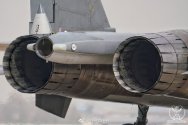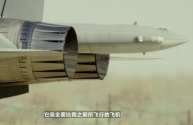What are those 4 rounded elongated shapes at the bottom of back of the large wings? Would'nt they be bad for RCS?
Are you talking about the actuators? They are necessary for moving control surfaces.
What are those 4 rounded elongated shapes at the bottom of back of the large wings? Would'nt they be bad for RCS?
Those are actuators. They used to look a lot worse on the early prototypes. Indeed, they may be somewhat detrimental to RCS.What are those 4 rounded elongated shapes at the bottom of back of the large wings? Would'nt they be bad for RCS?
What are those 4 rounded elongated shapes at the bottom of back of the large wings? Would'nt they be bad for RCS?
I agree, especially looking at this one. The contrails from the wing tips are different hue (gray, bluish) while the exhaust is yellowish even though they are at the same angle from the sun. And there is no contrail created by main wings to mistaken with the exhaust.Seems like for parts of the particular flight and at certain angles (or camera settings) there is a bit of visible exhaust.
I don't think we've ever particularly seen visible smoke from WS-10 variants in the past from the various jets that are in service, so I suspect this is conditional on something specific.

It is just to enable the stabs to move without hitting the base. Think about if you make a door 50 mm thick with a 1 mm gap to the door frame, can you open it?View attachment 77547
Anyone understand the reason for the horizontal stab gaps? I'm guessing it's some sort of flow separation trick for more effective control? There aren't many other planes that have all moving stabs to compare to.
I think WS-10 on flankers are the same. You can see the inner petal here. Only WS-10 TVC has inner petal removed because it has to. Together the airflow inside the engine and control algorithm has to be changed.It's interesting that WS-10C uses the inner petal to adjust to the flow (almost like Snemac M88), while WS-10 on J-16 uses F100/F110 style petals.

Well… there is no doubt about that for a long time…Great catch! Indeed it looks like a large single display.
I think WS-10 on flankers are the same. You can see the inner petal here. Only WS-10 TVC has inner petal removed because it has to. Together the airflow inside the engine and control algorithm has to be changed.
View attachment 77665
You mean the actuators? Planes need them to manoeuvre. F22 and F35 both have them.
@The ObserverThe newer variant of WS-10 with elongated feathers got rid of the inner petals.

